During the mid-to-late-1910s, Maldwyn Jones (below) was perhaps the best dirt track racer in the Midwest– winning hundreds of regional dirt track events during his 13-year motorcycle racing career. During the mid-1910s, Jones was dominant on countless half-mile dirt-track ovals of the Midwest. In 1914, riding his Merkel, Jones won a highly publicized five-mile match race against a Mercer race car on a dirt oval in Dayton, Ohio. During this period, Jones’ racing, as well as bike and equipment design efforts kept Merkel in the spotlight even though the it had officially dropped its factory racing effort in 1910. With Merkel floundering, Maldwyn Jones accepted an offer to ride for team Harley-Davidson in 1916. Even though he was racing for Harley-Davidson, Jones continued utilizing the superior-handling chassis he had designed and developed with Merkel. In 1922, Jones was signed by Excelsior and was again runner up at the M&ATA 25-mile national dirt track championship in Milwaukee. Jones also started competing in motorcycle hillclimbing while riding for Excelsior and won a number of regional events. He retired from motorcycle racing altogether at the end of 1922 to work for Indianapolis-based Wheeler-Schebler Company– famous for its racing carburetors.
*
*
Fred Ludlow (below) was supported by Indian in the form of one of its new eight-valve racing bikes in 1914. He raced frequently around the circuits of California. The young Ludlow earned his share of wins despite having to go up against established veterans such as Don Johns, Morty Graves and the other top riders of that era. In 1916 and 1917, he focused his efforts on endurance runs and racked-up a slew of perfect scores in the long-distance contests. Ludlow served a brief stint in the Signal Corps during World War I, leaving for Europe in April of 1918 and returning from the war in August of 1919. Soon after his discharge, he was signed by Harley-Davidson’s competition manager Bill Ottoway to race for the Milwaukee-based team. Harley assembled a top-notch racing team in 1920. Known as the “Wrecking Crew”– it was chock full of talent, with Ludlow joining Ralph Hepburn, Otto Walker, Red Parkhurst and later, Jim Davis, Ray Weishaar and Maldwyn Jones, in one of the most powerful factory squads ever put together.
*
Fred Ludlow was a top board track motorcycle racer of the 1910s who made the transition to the dirt track. Ludlow's greatest accomplishment came in September of 1921, when he won five national championships at the M&ATA finale on the dirt mile at Syracuse, New York.
*
Fred Ludlow successfully rode in most of great races of the day, such as the Dodge City 300. He achieved his greatest success on September 19, 1921, on the famous Syracuse (New York) Mile– with Ludlow sweeping all of the national titles that day. He was perfect with five wins in five races on his factory Harley-Davidson, besting most of the top stars of the day, including the likes of Jim Davis, Don Marks, and Ralph Hepburn. It was one of the most dominant performances in the history of the sport. Ludlow’s popularity grew and Harley-Davidson sent him across the country in a sidecar to host racing film shows for various clubs and organizations interested in motorcycle racing. Ludlow’s success at Syracuse in 1921 proved to be his swan song on the race tracks of America. He was fired by Harley-Davidson in 1922 and went to work as a mechanic for C. Will Risdon’s Indian dealership in Los Angeles. In 1923, he joined the South Pasadena Police Department as a motorcycle officer, and a year later transferred to the Pasadena Police Department.
*
In the fall of 1938, a group of Indian enthusiasts from Hap Alzina's Indian dealership in Oakland, California made an ill-fated attempt at setting the world motorcycle land speed record at the Bonneville Salt Flats in Utah. Ludlow, then 43, was selected to ride the totally enclosed Indian-powered streamliner christened the "Arrow."
*
Otto Walker (below) was a leading motorcycle racer in the 1910s and early 1920s and was one of Harley-Davidson’s first factory riders. Walker won the first major race for the Harley-Davidson factory team on April of 1915– an FAM 300-mile road race in Venice, California. Walker set numerous speed records during his eight-year professional racing career. He earned the impressive distinction of being the first rider ever to win a motorcycle race at an average race speed of over 100 mph in 1921.
*
*
By 1914, Harley-Davidson was just getting into competitive racing and sponsored Otto Walker. By the end of that season he turned pro, but Walker’s pro career had no so sooner started when he was injured in a crash and forced to sit out the rest of the 1914 racing season. On April 4, 1915, Walker gave Harley-Davidson its first national victory when he won the 300-mile road race national held on the streets of Venice, California. That race was one of the biggest of the year and was contested by most of the major factory teams. Walker’s victory in that race over the established racing stars of the day was considered an upset even though he was riding for factory Harley-Davidson. Walker followed up the Venice win with an even more impressive victory in July of that year when he won the prestigious Dodge City 300, the biggest motorcycling racing event in America during that era. Even after a tire blowout and a broken lens in his goggles, Walker held on, and with a lap and a half remaining he passed Indian’s Morty Graves, who had run out of gas on the back straight with less than three miles to go. A souvenir from WWI became a signature look for Otto Walker– he began wearing a German aviator helmet instead of a standard motorcycle racing helmet during his races. Walker was also known for his unique riding style. He would arch his back on straightaways to give himself a better aerodynamic profile and his fellow competitors began calling him “Camelback” Walker. He retired after the 1922 racing season (as did fellow competitors “Red” Parkhurst and Maldwyn Jones). Walker ran a sport-fishing service on the Sacramento River and died in 1963 at the age of 73.
*
An early Class A racing champion, Jim Davis was one of the few who won titles under the banner of the predecessors to the American Motorcyclist Association, the Federation of American Motorcyclists (FAM) and the Motorcycle and Allied Trades Association (M&ATA). He excelled in board-track racing and on dirt ovals. Davis also won the very first national race sanctioned by the AMA, the 25-mile AMA National Championship held on a one-mile dirt oval in Toledo, Ohio, on July 26, 1924.

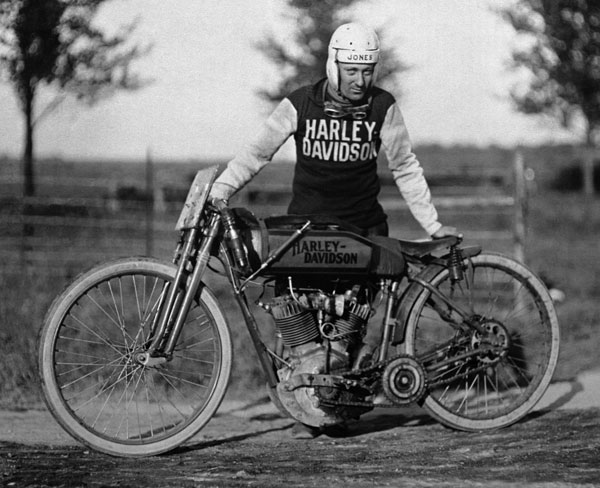
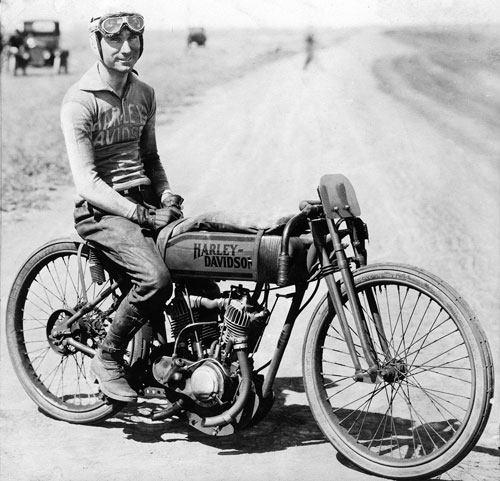
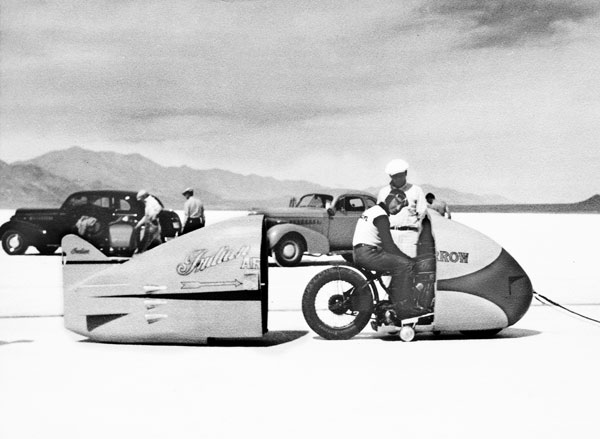
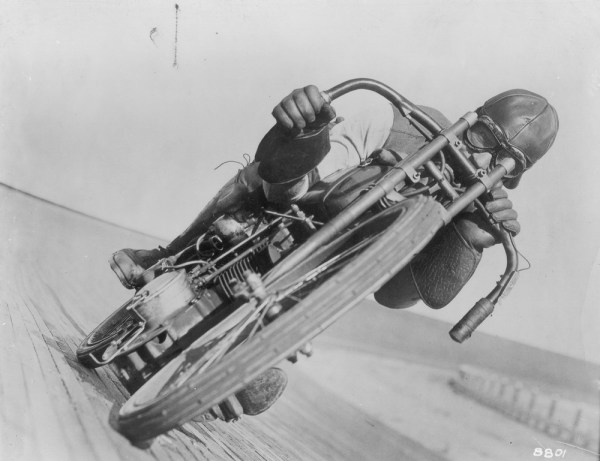
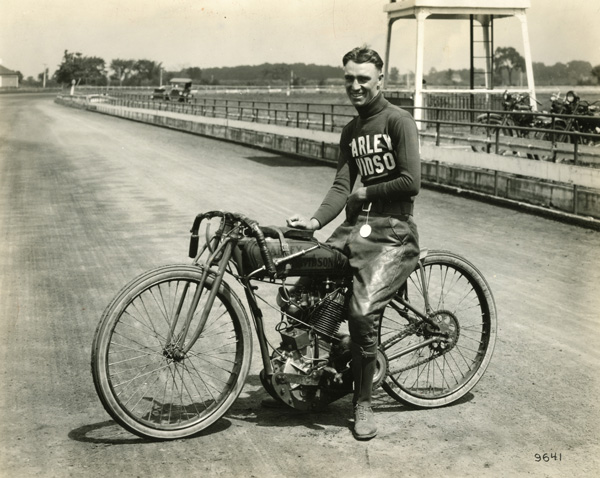
No comments:
Post a Comment